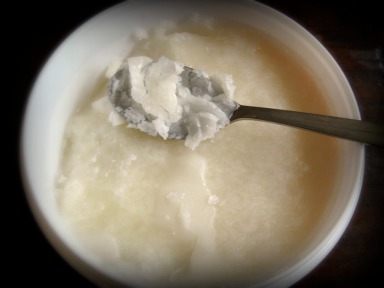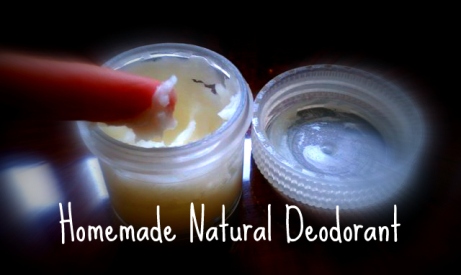I was speaking with Naomi and Aya on the phone the other night, and my natural deodorant recipe came up. Then we started talking about other natural beauty products and so I promised them I’d write this post on the other items that I use in my regular beauty routine.
I think that for a lot of people it’s difficult to make the switch from regular beauty products to non-toxic products–it’s easy to assume that the routine will be harder, or that the natural products won’t work as well. For me the experience has been just the opposite. I have fewer products in my cabinet, my morning and nighttime routine is shorter, and they work better than what I was using before. For me, there are two other aspects about using natural face and body products that I love: 1) just as with my food, I love being able to look at a product’s ingredients and understand exactly what it’s made up of and 2) skin is porous! I like putting things on my skin that I would be comfortable ingesting.
Okay, so all of that said, here are the products that I have been using for the past 6 months or so:
Jojoba Oil-
As you can see in the image above, I use Desert Essence 100% pure Jojoba oil, but I’m sure that there are plenty of other brands that would be great. The important thing is that it is 100% pure and not cut with any other oils. For complicated scientific reasons that I can neither understand or explain, jojoba is more similar in structure to human sebum than other synthetic moisturizers or vegetable oils, making it an extremely effective moisturizer.
As a moisturizer and eye makeup remover: This stuff is expensive, but I only use a drop or two on my fingertips to moisturize my whole face in the morning and the evening. It is also a wonderful eye makeup remover, and doesn’t sting (why do we put things that sting us in our eyes?) at all.
As a face cleanser: I only use jojoba sometimes as a facial cleaner (I’m also a fan of Burt’s Bees Orange Essence Facial Cleanser), but I have used it to great effect as one. Simply wet your face, rub a pea-sized amount on your face, and exfoliate with a wet washcloth. The amazing thing about using jojoba as a cleanser or a moisturizer is that you would think that it would leave your skin oily, but it doesn’t at all. Most of us strip our skin of its natural oils daily by using harsh cleansers, making your skin going into repair mode by emitting more oil. Thus begins an awful cycle of dry skin followed by oily skin–I’ve found that using jojoba oil has eliminated this.
To combat skin conditions caused by harsh face products: Another benefit of jojoba? I get milia, small white cysts, on my eyelids and around my eyes. I’ve found that by using jojoba oil, almost all of them have gone away. I’ve read in various places that the dyes, fragrance, and mineral oil found in many face products can cause these, and I’m assuming that’s what caused mine in the first place.
Coconut Oil-
Coconut oil is a wonderful moisturizer with anti-bacterial properties (which is another reason that it makes a great natural deodorant base). As with Sara’s recent post on using coconut oil for popcorn, many people love using it for cooking. I have started experimenting with it for cooking, but in the meantime, I like using food-grade products on my skin, and unrefined, or virgin, virgin organic coconut oil (you want it to be free of chemical solvents) fits the bill. It is solid when at room temperature, but turns liquid when warmed. Here’s a trick: look for it in the cooking aisle of the grocery and it will most likely be cheaper than the stuff in the beauty aisle–or at least that was the case when I checked at Whole Paycheck. Also, I go through this pretty quickly, but if you keep coconut oil around for a long time without refrigerating it, it can go rancid, just like any oil. It’s easier to use if it’s not solid though, so I keep mine at room temp and haven’t had any problems moving through it fast enough to keep it from spoiling.
As a body moisturizer: Coconut oil is cheaper than jojoba oil, making it a more cost-effective body moisturizer. In the mornings, after showering, I get a small bit in my hand, rub my hands together to melt it, and oil up. I sometimes add a few drops of grapefruit essential oil for a yummy scent.
As a shaving oil: Shaving causes nicks and opens up pores, and adding chemicals to the mix via shaving creams can create nasty razor burn or irritation. You can lather on a bit of coconut oil instead for shaving–you can see your leg easier while shaving and you have the added benefit of moisturizing and shaving at the same time.
Vitamin E-

What the what? The chemical structure of tocopherol, aka, vitamin e.
Vitamin E, or tocopherol, is a fat-soluble antioxidant. Health regulations require that this is listed as tocopherol on ingredient lists, so this is one of those cases where a hard to pronounce item in your beauty products is okay. So many people make claims that are hard to prove about Vitamin E, all of which I’m skeptical about. However, there is some agreement that Vitamin E is good for preventing fine lines and it might be able to help fight sun damage as well. Mainly, though, I wanted a thicker more heavy duty around-the-eyes moisturizer without chemicals and in that sense, Vitamin E fit the bill. I use a Vitamin E blend from Jason Naturals because that is what I could find easily with good reviews. It is 45,000 IU (International Units), and is Vitamin E blended with Sunflower Seed Oil, Safflower Seed Oil, Camellia Leaf Oil, Macadamia Nut Oil, Pistaschio Nut Oil, Borage Seed Oil, Black Currant Seed Oil, Evening Primrose Oil. Whew! I don’t know what all of those do, but they have a low toxicity rate, which is the important thing. I couldn’t find pure Vitamin E, but that might be better–I’ll have to do some more research.
As a wrinkle-fighter around the eye moisturizer: There’s so much conflicting research about what skin products will do what. However, I did want a heavier moisturizer for around my eyes to try and avoid wrinkles and to keep this skin supple as it’s the area on my face that tends to dry out first. The Vitamin E blend above isn’t cheap, but it isn’t as expensive as most of the pricey, chemical-filled eye creams that are marketed to women out there. The product above is very thick and viscous and so I only put it on before bed.
As a cuticle treatment: Especially in the winter, I get awful hangnails and dry hands. I massage this into my cuticles before bed or mix a drop of it into my coconut oil for a heavy duty hand lotion, and I find it really does help.
K.I.S.S.- Keep it simple, stupid
When you travel, do you carry a face wash, face lotion, body lotion, and eye makeup remover? I used to! Now, I just fill a little Nalgene travel container with jojoba oil and take that with me (I’m willing to use jojoba as a body moisturizer when I’m traveling to save space). SO much easier than lugging all of those darn liquids through security (I refuse to check luggage). So, in other words, using natural skin care products makes your life easier and your luggage lighter. It’s all about keeping it simple.
Another important thing to remember? Just because something is “natural” doesn’t mean its hypoallergenic, so if you have sensitive skin, be sure to test any product in small amounts before taking it on as a part of your daily regimen.
Don’t buy into the hype-
 Yet another reason to go with the natural stuff? Because I resent all of the magazines, advertisements, and cosmetic companies telling me that my skin is going to hell in a handbag, that if I don’t lather my skin with this, that, and the other that I will have irreparable damage to my skin, and nothing will be able to save the crap show that my face has become as I march on towards the inevitable death of my body. That is all a bunch of BS. And it’s depressing. And the sad thing is that I read it so often everywhere–my need for these products–that it’s easy to believe! Defy them all by just using the simple stuff, not buying their junk, keeping your skin comfortable to you, and not worrying about the rest.
Yet another reason to go with the natural stuff? Because I resent all of the magazines, advertisements, and cosmetic companies telling me that my skin is going to hell in a handbag, that if I don’t lather my skin with this, that, and the other that I will have irreparable damage to my skin, and nothing will be able to save the crap show that my face has become as I march on towards the inevitable death of my body. That is all a bunch of BS. And it’s depressing. And the sad thing is that I read it so often everywhere–my need for these products–that it’s easy to believe! Defy them all by just using the simple stuff, not buying their junk, keeping your skin comfortable to you, and not worrying about the rest.
Okay, that’s my very long spiel. Sorry for rambling on. More natural home cleaning recipes to follow in the not-so-distant future!







